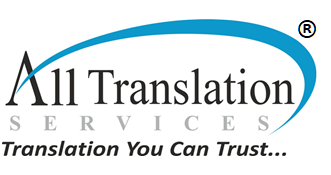How Does Transliteration Differ From Translation?
Words are related to emotion. Whether narrating a tough topic or talking to a client, they always appreciate personalized experience. Translation and transliteration both involve the translation of certain content. However, they are quite different. The former refers to simply translating a text in a different language. On the other hand, the latter suggests converting the texts on the basis of phonetic similarity.
Business owners and researchers who want to expand their reach in the global field must understand the basic differences. In fact, it is essential to know the fine lines between these two modes.
Example of Transliteration
The next example will help you to understand what transliteration is all about.
Suppose you are in a Chinese bar in New York; you will find that they have not written the menu in English. However, you can roughly see what it means. The menu shows Wan Ton Soup which is written in the English alphabet. However, if it was written in the Mandarin alphabet, it would look like 炒面. Hence, you won’t get what that means unless you know Mandarin. This simplified transliteration can assist the clients in reading and understanding the menu.
Example of Translation
On the other hand, translation means simply translating a text word to word. For example, the English text Selling hotcakes at an affordable price can be translated into Chinese, which would look like this 以實惠的價格出售烤餅
This mode of translation can help the Chinese audience to understand the meaning of English text. The translation is a great way to grab the attention of the local people.
Transliteration vs. Translation; Which Is Better In Marketing?
From firm owners to scientific researchers, translation and transliteration are lots of methods to expand the market reach globally. However, when it comes to marketing, the usage of these two methods is not universally applicable. While transliteration is culture-oriented, translation blindly follows the specific formula. Many firm owners who want to establish a global stand might wonder which method is beneficial for their business. Read on to the next section to clear all your doubts.
In terms of marketing, it is vital to recognize the cultural and regional value of the local market. In fact, to connect with the people more, it is vital to add the specific value of the regional language. With transliteration, one can achieve the potential requirement needed for marketing. Transliteration covers all potential points, from selecting an empathetic tone to adding value to the language. Moreover, it is more impactful in sending the right brand message to the viewers.
On the other hand, translation might not match the crux of the targeted language. For example, the meaning of Mist is culturally different in Germany. This is why the whiskey brand Canadian Mist couldn’t make a hit there. Overall, translation fails to integrate the emotional touch to the translated content.
Transliteration and translation are totally different in application and process as well. If simple translation serves your purpose, you can go for it. However, the former would be a great option if you want to add value to the targeted language. Based on your needs you can choose your preference.
